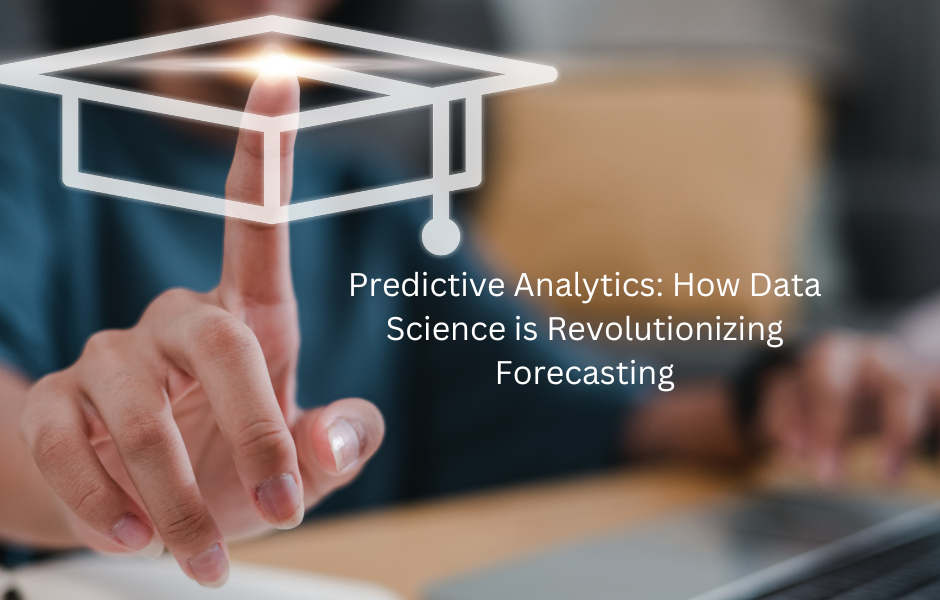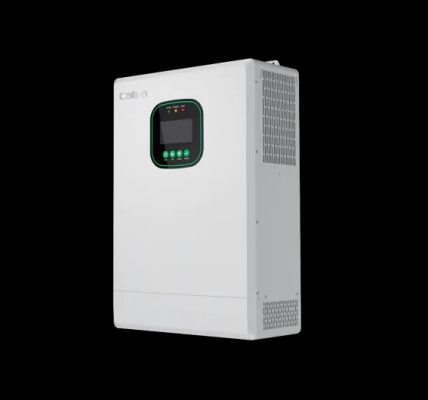Introduction to Predictive Analytics
Predictive analytics stands at the forefront of data science, offering businesses and organizations the ability to forecast future trends, behaviors, and outcomes with remarkable accuracy. It represents a powerful approach to extracting actionable insights from historical data, enabling proactive decision-making and strategic planning. By leveraging advanced statistical techniques, machine learning algorithms, and computational modeling, predictive analytics empowers organizations to anticipate and capitalize on emerging opportunities while mitigating potential risks.
In essence, predictive analytics revolves around the utilization of historical data to identify patterns, trends, and relationships that can be extrapolated to make predictions about future events or behaviors. Whether it’s predicting customer purchasing behavior, forecasting sales trends, or anticipating equipment failures, predictive analytics enables organizations to stay ahead of the curve and gain a competitive edge in today’s fast-paced business landscape.
Benefits of Predictive Analytics
The adoption of predictive analytics offers a plethora of benefits for businesses and organizations seeking to enhance their decision-making processes and optimize their operations. One of the key advantages is the ability to make more accurate forecasts and predictions, enabling organizations to anticipate market trends, customer preferences, and business outcomes with greater precision.
Moreover, predictive analytics empowers organizations to identify and capitalize on new opportunities while minimizing risks. By analyzing historical data and identifying patterns and correlations, organizations can make informed decisions about resource allocation, product development, and strategic investments. This leads to improved operational efficiency, reduced costs, and increased profitability.
Furthermore, predictive analytics enables organizations to enhance customer experiences and drive business growth. By understanding customer behavior, preferences, and needs, organizations can personalize marketing campaigns, tailor product offerings, and deliver targeted recommendations that resonate with individual customers. This leads to increased customer satisfaction, loyalty, and retention, ultimately driving revenue and market share.
Overall, the benefits of predictive analytics extend across all facets of business operations, from sales and marketing to finance, supply chain management, and beyond. By leveraging predictive analytics, organizations can unlock new insights, make better decisions, and achieve sustainable growth and success in today’s dynamic and competitive marketplace.
Applications of Predictive Analytics in Sales and Marketing
Predictive analytics has revolutionized sales and marketing by providing organizations with powerful tools to forecast consumer behavior, identify trends, and tailor marketing strategies for maximum impact. In sales, predictive analytics is utilized to forecast future sales trends, identify potential leads, and prioritize sales opportunities. By analyzing historical sales data, customer interactions, and market trends, organizations can identify patterns and correlations that enable them to predict future sales volumes and anticipate customer needs.
In marketing, predictive analytics is used to segment customers, personalize marketing campaigns, and optimize marketing spend. By leveraging data on customer demographics, preferences, and past behaviors, organizations can create targeted marketing campaigns that resonate with individual customers and drive engagement and conversions. Additionally, predictive analytics enables organizations to optimize marketing channels and allocate resources effectively, ensuring maximum ROI on marketing investments.
Overall, predictive analytics empowers sales and marketing teams to make data-driven decisions, improve targeting and segmentation, and enhance customer engagement and satisfaction. By leveraging predictive analytics in sales and marketing, organizations can gain a competitive advantage, increase revenue, and drive business growth.
Predictive Analytics for Financial Forecasting
Financial forecasting is a critical aspect of business operations, enabling organizations to anticipate market trends, assess risks, and make informed financial decisions. Predictive analytics plays a central role in financial forecasting by providing organizations with the tools and techniques to analyze historical financial data, identify patterns, and make accurate predictions about future financial performance.
In financial forecasting, predictive analytics is used to predict stock prices, assess credit risk, and optimize investment strategies. By analyzing historical market data, economic indicators, and company financials, organizations can develop predictive models that forecast future stock prices and investment returns. Additionally, predictive analytics enables organizations to assess credit risk by analyzing customer credit histories, financial statements, and other relevant data points. By identifying customers who are most likely to default on loans or miss payments, organizations can mitigate credit risk and reduce potential losses.
Furthermore, predictive analytics is used to optimize investment strategies by identifying investment opportunities, assessing portfolio performance, and predicting market trends. By leveraging data on market conditions, asset prices, and economic indicators, organizations can develop predictive models that guide investment decisions and maximize returns on investment.
Overall, predictive analytics enables organizations to make more accurate financial forecasts, assess risks, and optimize investment strategies. By leveraging predictive analytics in financial forecasting, organizations can gain a competitive advantage, reduce financial risk, and achieve their financial goals.
Predictive Analytics in Healthcare
Predictive analytics is transforming healthcare by enabling organizations to forecast patient outcomes, personalize treatment plans, and optimize healthcare delivery. In healthcare, predictive analytics is used to analyze patient data, medical histories, and clinical outcomes to identify patterns and correlations that can be used to predict future health events. For example, predictive analytics can be used to identify patients at risk of developing chronic diseases, such as diabetes or heart disease, and intervene early to prevent complications.
Additionally, predictive analytics enables healthcare providers to personalize treatment plans based on individual patient characteristics, preferences, and genetic profiles. By leveraging data on patient demographics, medical histories, and genetic markers, healthcare providers can tailor treatments to meet the unique needs of each patient, leading to improved outcomes and patient satisfaction.
Furthermore, predictive analytics is used to optimize healthcare delivery by forecasting patient demand, predicting resource utilization, and improving operational efficiency. By analyzing data on patient demographics, service utilization patterns, and staffing levels, healthcare organizations can make informed decisions about resource allocation, scheduling, and capacity planning, ensuring that patients receive timely and efficient care.
Overall, predictive analytics is revolutionizing healthcare by enabling organizations to forecast patient outcomes, personalize treatments, and optimize healthcare delivery. By leveraging predictive analytics in healthcare, organizations can improve patient outcomes, reduce costs, and enhance the overall quality of care.
Conclusion
In conclusion, predictive analytics powered by data science has emerged as a game-changer across various industries, revolutionizing forecasting and decision-making processes. By leveraging historical data, advanced statistical techniques, and machine learning algorithms, organizations can anticipate future trends, identify opportunities, and mitigate risks with unprecedented accuracy. From sales and marketing to finance, supply chain management, healthcare, and beyond, predictive analytics has demonstrated its versatility and effectiveness in driving business outcomes and improving operational efficiency. It enables organizations to make data-driven decisions, personalize customer experiences, and optimize resource allocation, leading to increased revenue, reduced costs, and enhanced competitiveness. Furthermore, the potential of predictive analytics is boundless, with ongoing advancements in technology and methodologies continuously expanding its capabilities and applications. As organizations strive to stay ahead in today’s dynamic and competitive marketplace, investing in predictive analytics and data science training is imperative. Best Data Science Training in Nagpur, Bhopal, Delhi, Noida ,Jaipur, etc, offer individuals the opportunity to acquire the knowledge, skills, and practical experience needed to excel in this field. By equipping themselves with the tools and techniques of predictive analytics, professionals in Nagpur can unlock new career opportunities and contribute to driving innovation and growth in their organizations and beyond. Embracing predictive analytics is not just a strategic imperative but also a pathway to future success in the data-driven economy.





